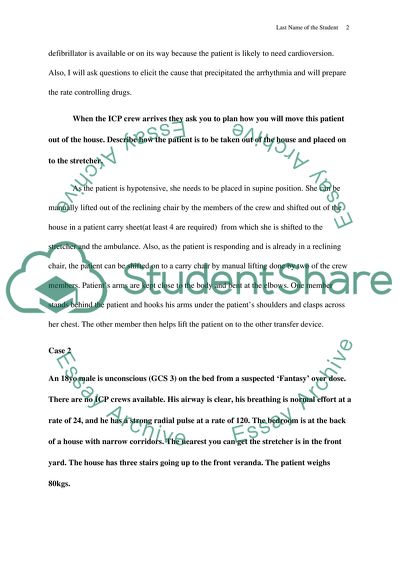Paramedics Essay Example | Topics and Well Written Essays - 500 words. https://studentshare.org/medical-science/1773356-clinical-paramedic-procedures
Paramedics Essay Example | Topics and Well Written Essays - 500 Words. https://studentshare.org/medical-science/1773356-clinical-paramedic-procedures.


